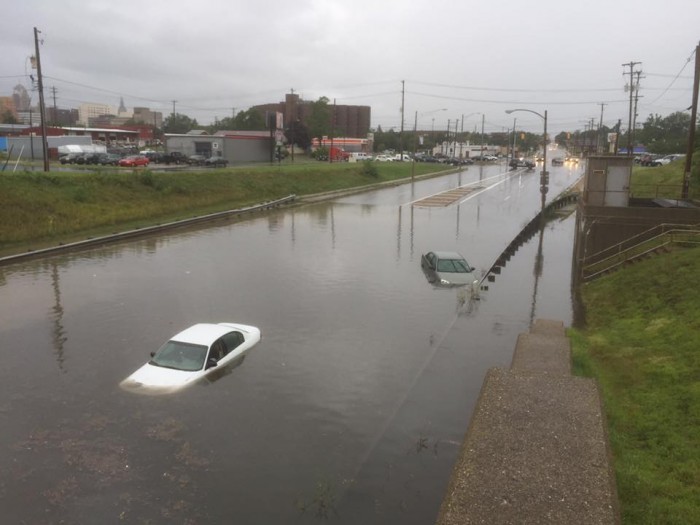STATE FIRE MARSHAL’S OFFICE SHARES GUIDANCE ON ALTERNATIVE FUEL VEHICLE HAZARD IN THE WAKE OF IAN pic.twitter.com/DpgHEitaN2
— Fort Myers Beach Fire District (@FMBeachFire) October 9, 2022
Ironically, EV fires require A LOT more water to extinguish. Tesla’s First Responders Guide recommends 3,000 to 8,000 gallons of water on hand to put out a Tesla fire. Some fires have needed 30,000 gallons of water to extinguish. Basically, firefighters have to do whatever it takes to cool down the battery, and that’s really hard to do with so much energy densely packed into the pack. Once the fire appears fully extinguished, there’s a chance it could still flare up, even days later. Towing services and junkyards are advised to park damaged electric vehicles at least 50 feet from other vehicles in the yard. As EVs become more popular, that might not be feasible in just a few years.
If your EV has been flooded take care.
EV battery fire risk
1. EV safety systems and battery packs are designed to be safe in water, even if fully submerged.
2. However, EVs that have been submerged in water, particularly salt water, may have a higher potential risk of experiencing a battery short circuit, which may result in a battery fire.
Removal and towing
1. Once flood waters have subsided and if there are no signs of fire or no exposed HV cables and components are observed, contact your EV manufacturer for advice on removal and towing.
2. If hiring a towing company to move your EV, ensure they’ve read the manufacturer emergency response guide to determine exactly how to tow the EV to reduce risk.
3. It’s a good idea for EVs that have been submerged to be stored at least 15m from other vehicles in a tow yard, in the unlikely event the battery catches fire later.
